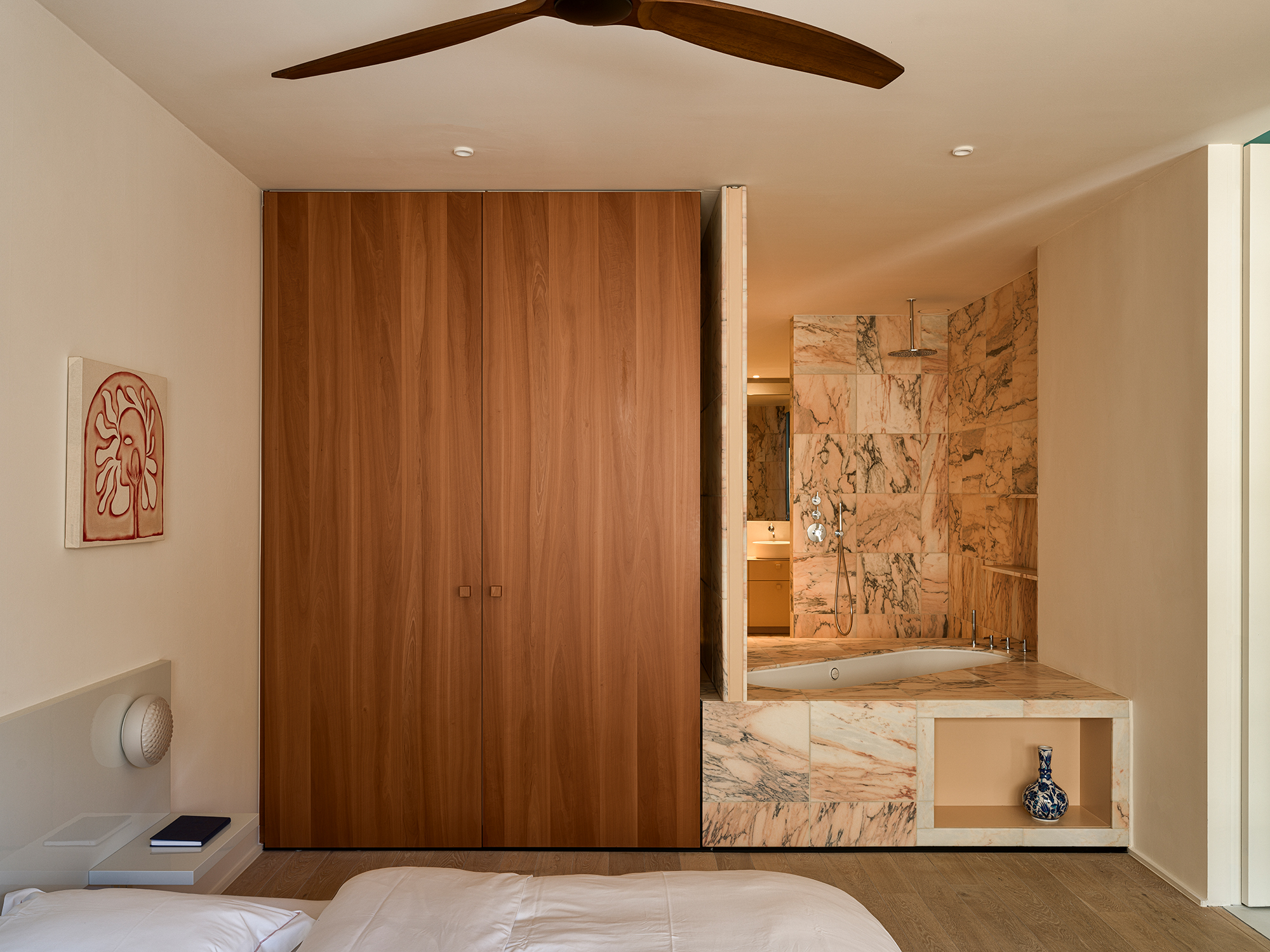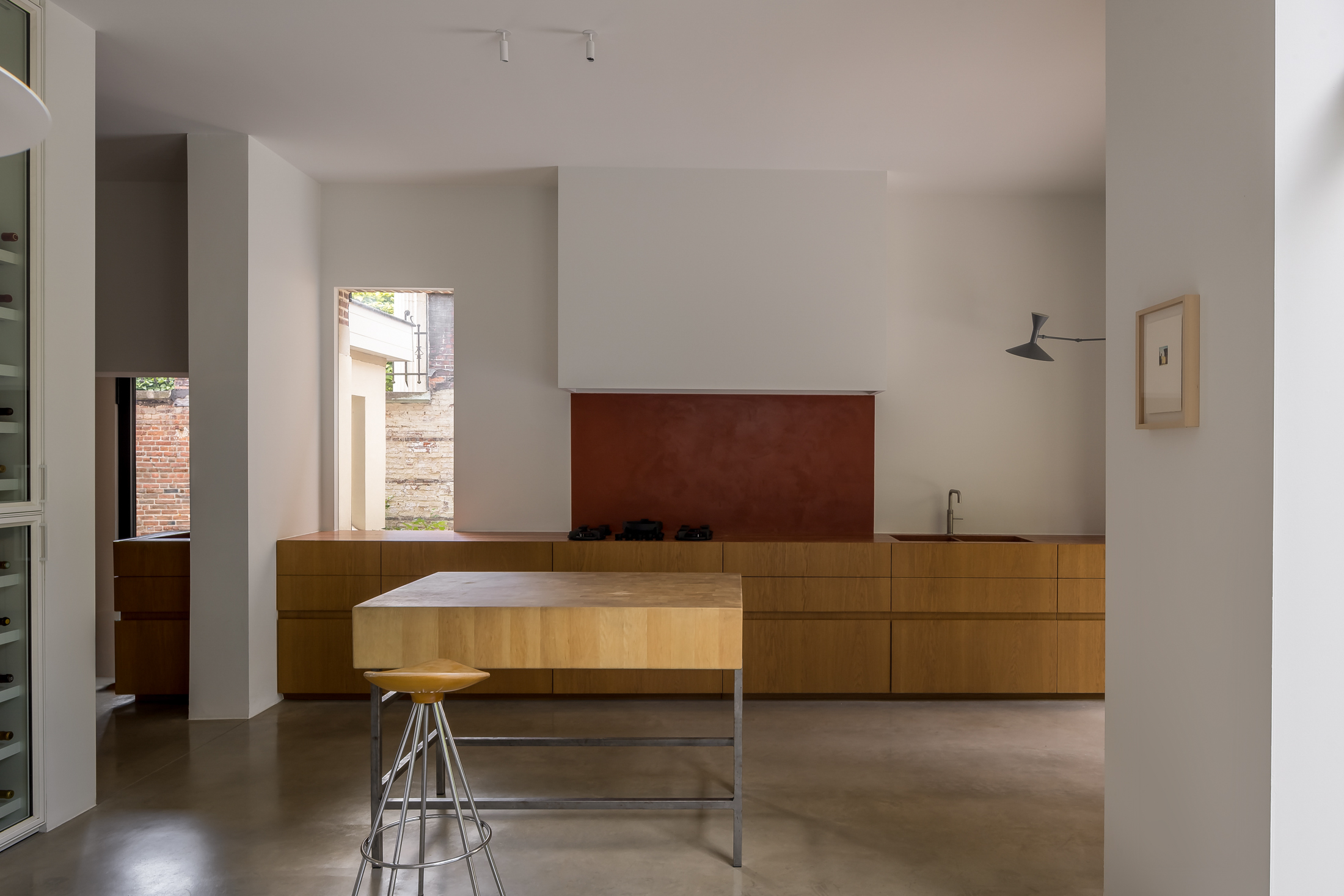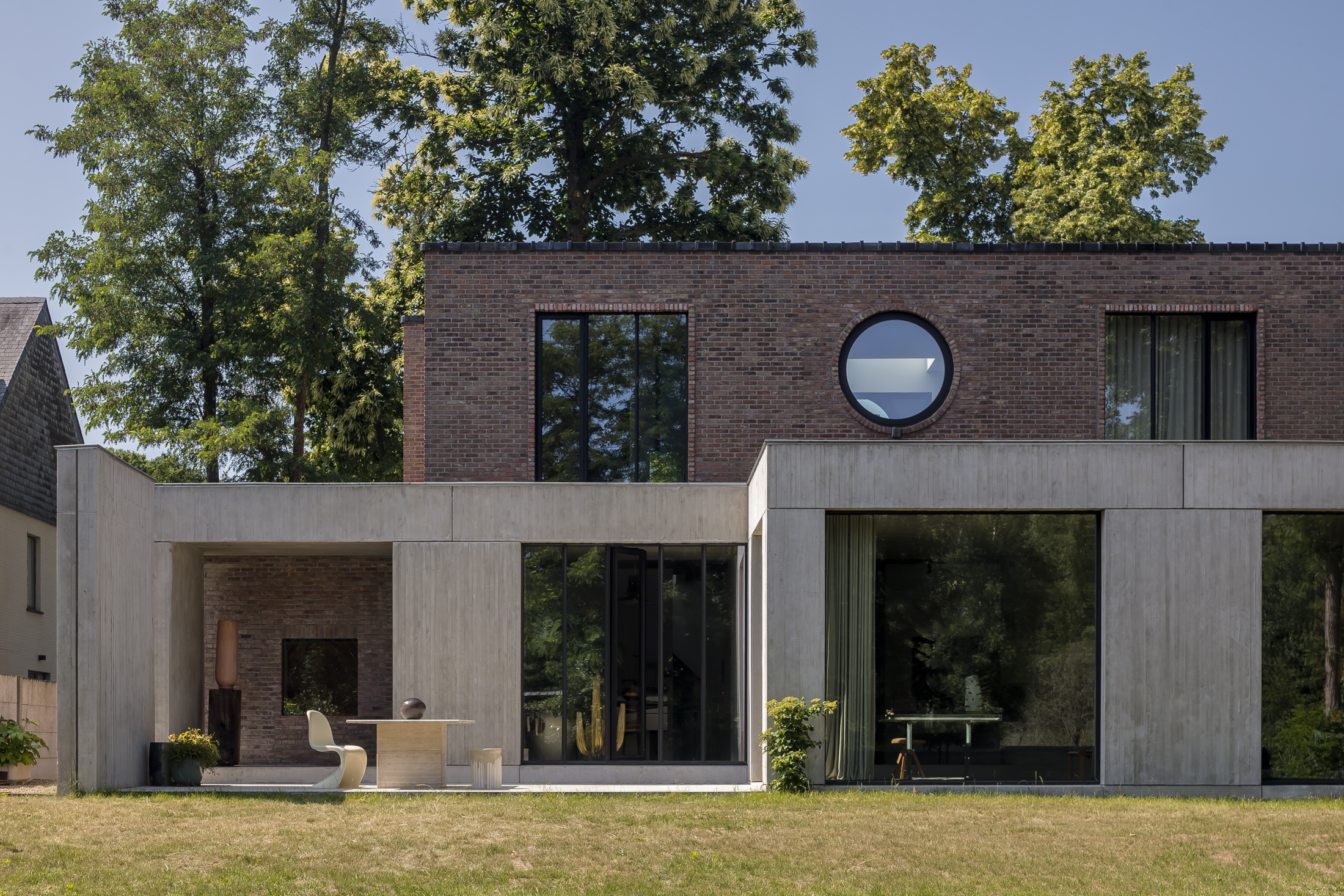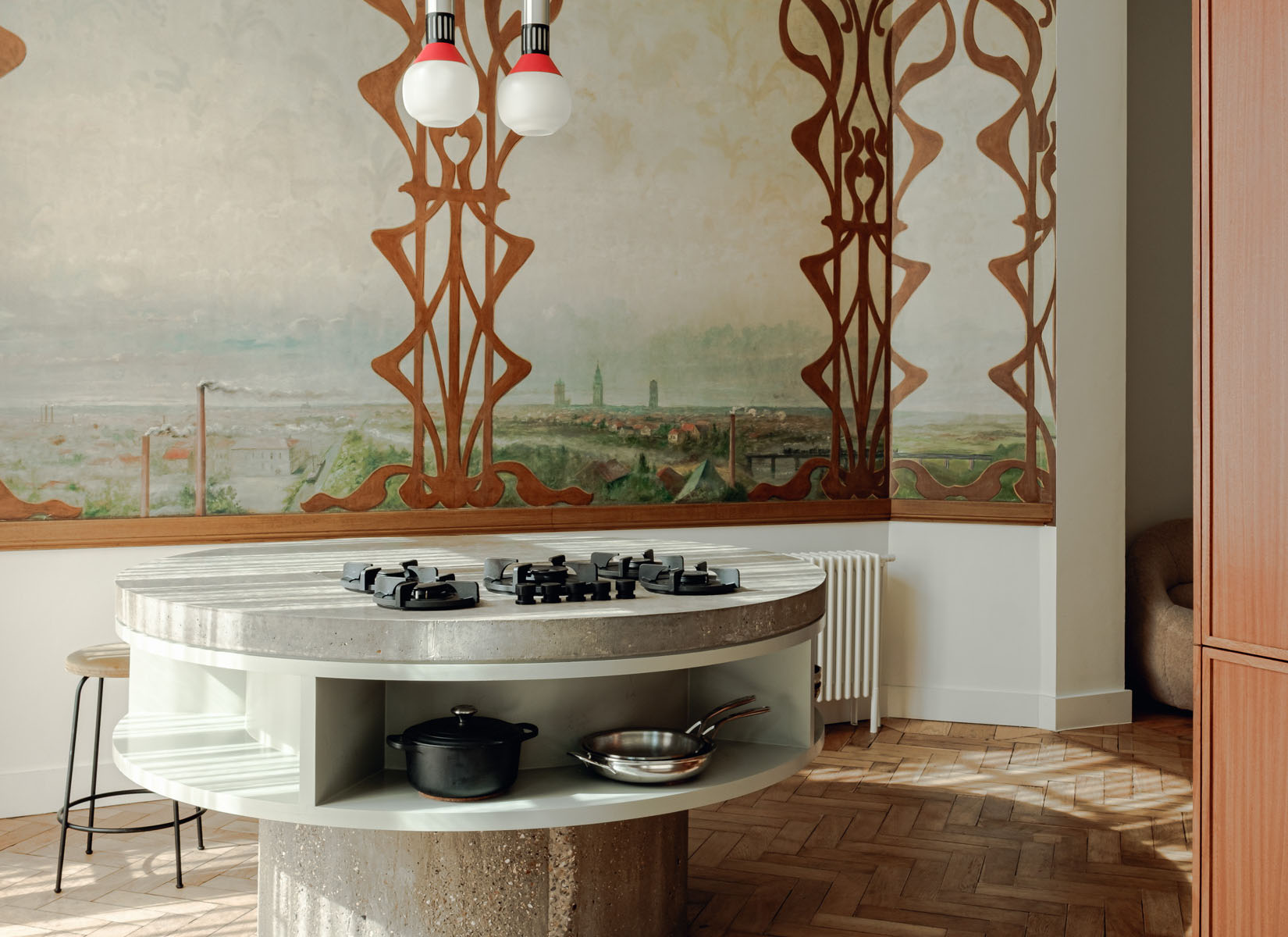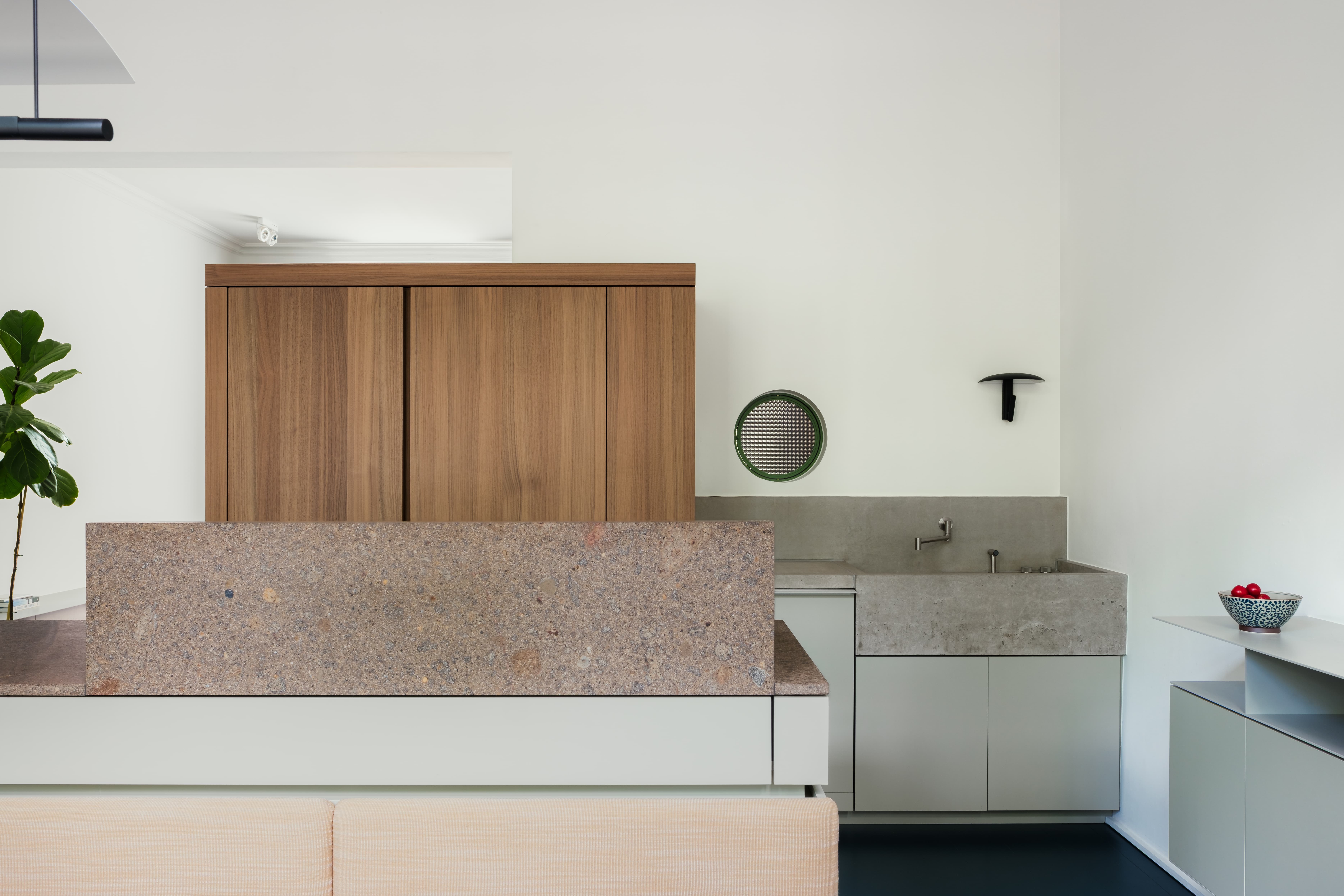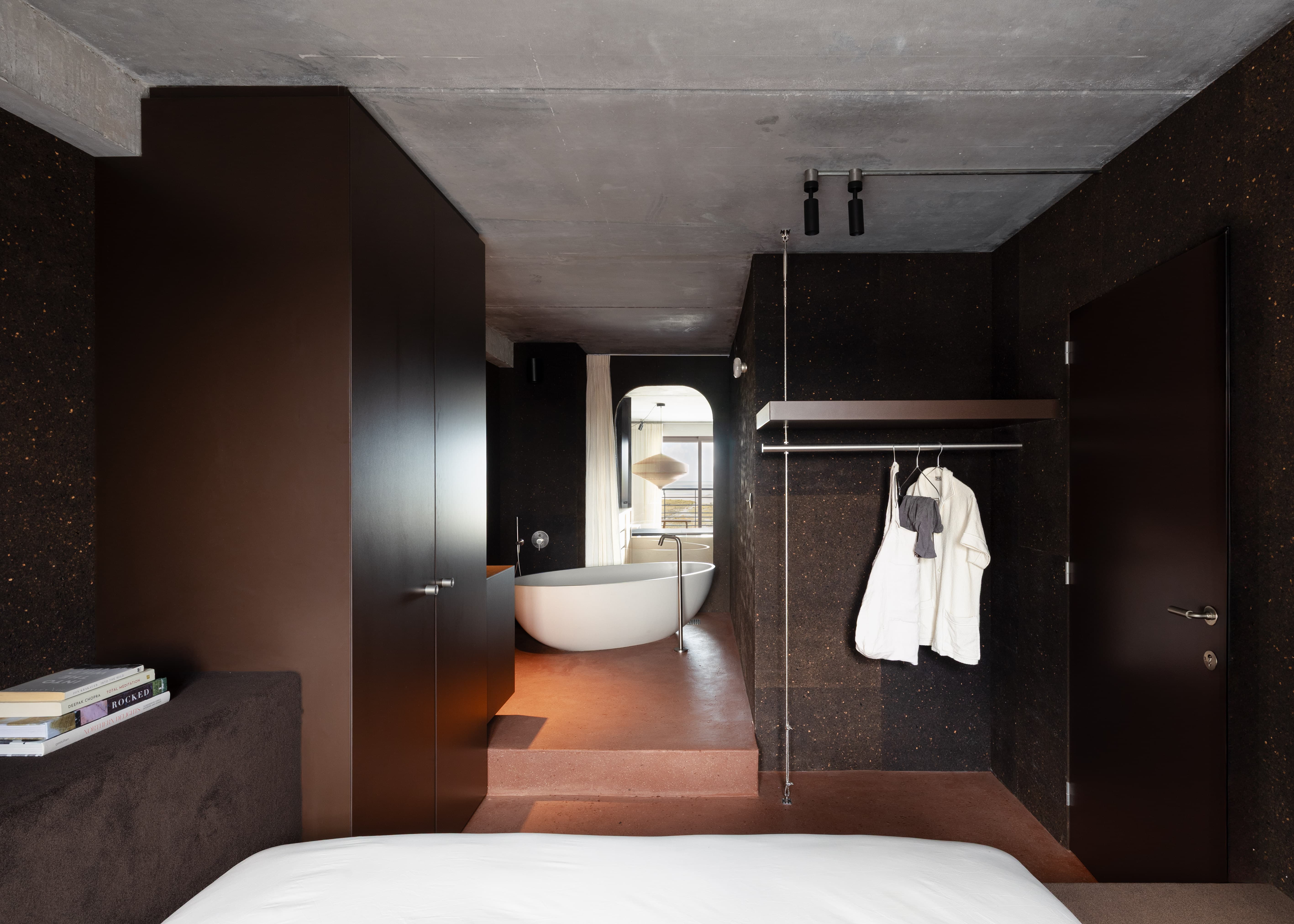Photography
Wim Martens
Design team
Sam Peeters Emily Maes Karlien Segers
Year
2023
Residential
Berchem
COGELS

.jpg)
This renovation project centers on a family home in Berchem, one of Antwerp’s most architecturally rich neighborhoods. Known for its ornate townhouses and layered interiors, the area has long celebrated craftsmanship and detail. Yet, in this particular home, years of unsympathetic renovations had eroded some of its original character. Our design approach became a careful investigation into what could be restored, what should be removed, and where new elements might be added.
.jpeg)

Floorplan

This renovation project centers on a family home in Berchem, one of Antwerp’s most architecturally rich neighborhoods. Known for its ornate townhouses and layered interiors, the area has long celebrated craftsmanship and detail. Yet, in this particular home, years of unsympathetic renovations had eroded some of its original character. Our design approach became a careful investigation into what could be restored, what should be removed, and where new elements might be added.
This renovation project centers on a family home in Berchem, one of Antwerp’s most architecturally rich neighborhoods. Known for its ornate townhouses and layered interiors, the area has long celebrated craftsmanship and detail. Yet, in this particular home, years of unsympathetic renovations had eroded some of its original character. Our design approach became a careful investigation into what could be restored, what should be removed, and where new elements might be added.

Every intervention was a dialogue between past and present. Rather than impose a new identity, we sought to collaborate with the house — allowing its few surviving features to guide the transformation. The design is mostly understated, letting the architecture breathe, with a few bold gestures introduced to re-anchor the home. One such intervention is a round concrete kitchen island — a sculptural centerpiece that sits opposite a hand-painted mural, the latter one of the home’s rare surviving artworks. Positioned in a light-filled space, the island offers 360° views of the adjoining rooms and staircase, making it both a practical and symbolic focal point.
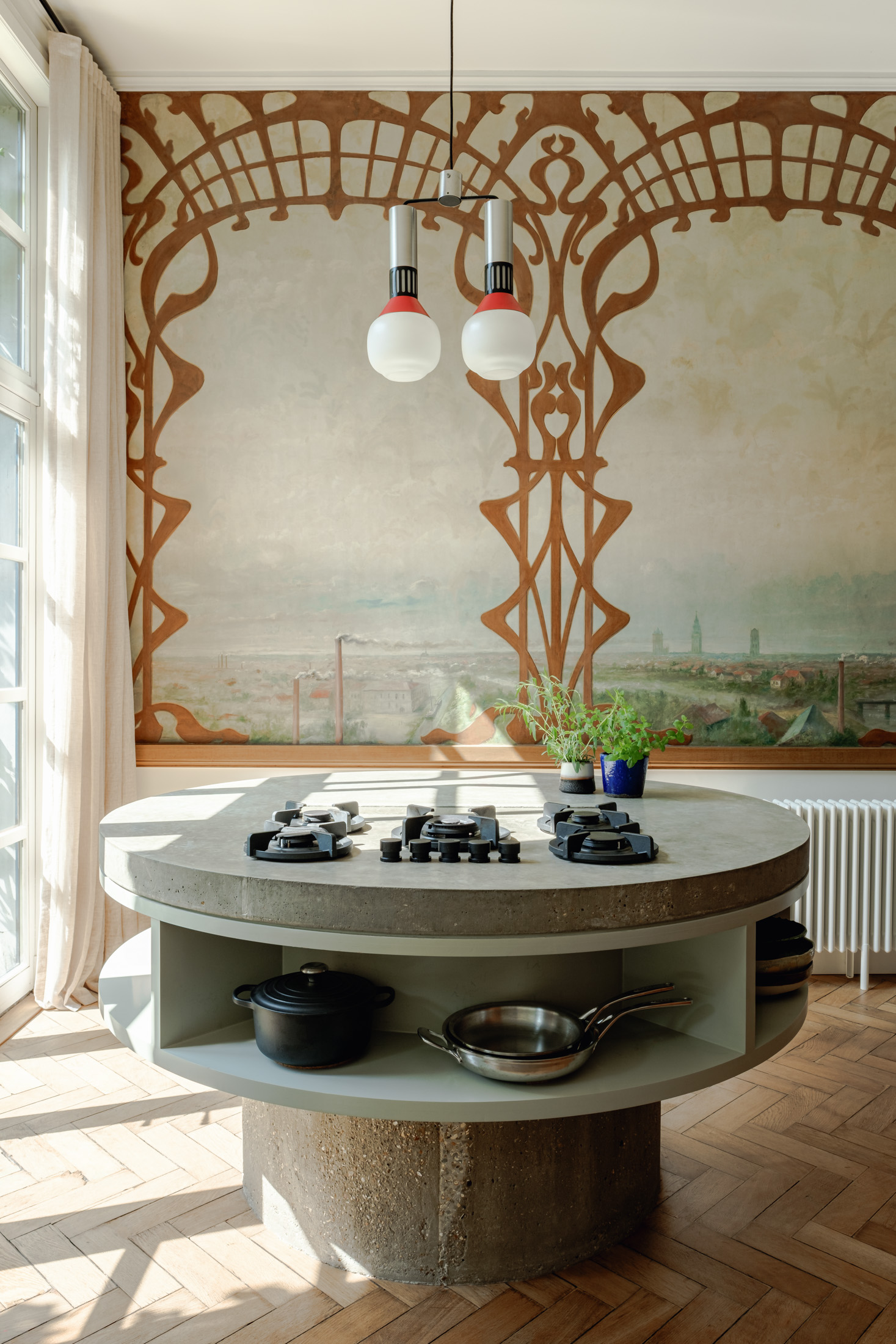





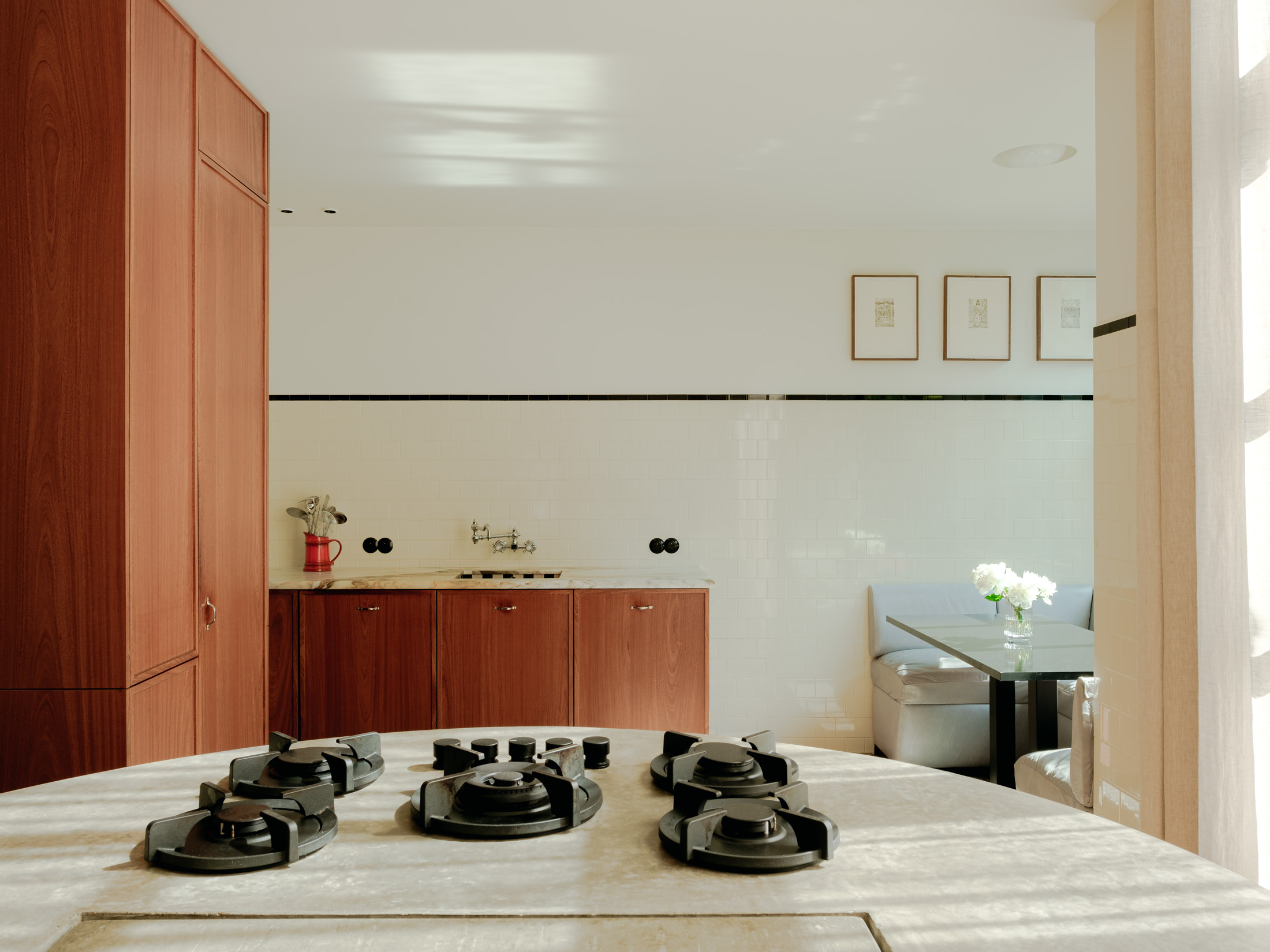







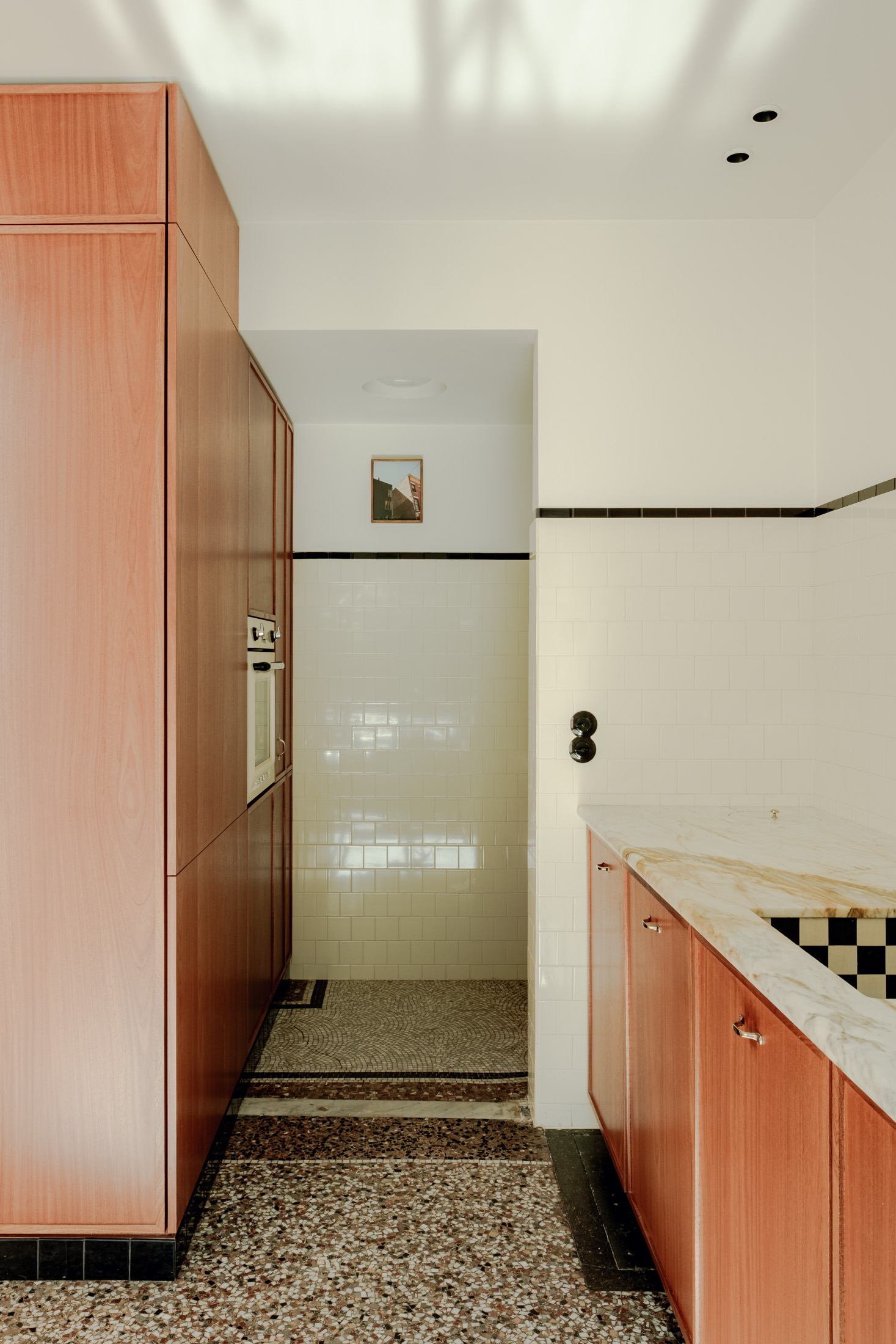






Every intervention was a dialogue between past and present. Rather than impose a new identity, we sought to collaborate with the house — allowing its few surviving features to guide the transformation. The design is mostly understated, letting the architecture breathe, with a few bold gestures introduced to re-anchor the home. One such intervention is a round concrete kitchen island — a sculptural centerpiece that sits opposite a hand-painted mural, the latter one of the home’s rare surviving artworks. Positioned in a light-filled space, the island offers 360° views of the adjoining rooms and staircase, making it both a practical and symbolic focal point.
Every intervention was a dialogue between past and present. Rather than impose a new identity, we sought to collaborate with the house — allowing its few surviving features to guide the transformation. The design is mostly understated, letting the architecture breathe, with a few bold gestures introduced to re-anchor the home. One such intervention is a round concrete kitchen island — a sculptural centerpiece that sits opposite a hand-painted mural, the latter one of the home’s rare surviving artworks. Positioned in a light-filled space, the island offers 360° views of the adjoining rooms and staircase, making it both a practical and symbolic focal point.

In an excisting bay window, we created custom built-in seating that flows into integrated shelving and storage. Executed in sapelli wood veneer, this rich material adds warmth and texture, while establishing a visual continuity that runs through the home. It reappears in the kitchen, where it is paired with an original terrazzo floor — a reminder of the building’s layered history. The kitchen itself unfolds in three parts: the central island, a built-in dining nook with a bespoke blue leather bench, and a functional wall with storage and sink. This layout supports both daily living and social cooking, emphasizing openness and ease of movement.
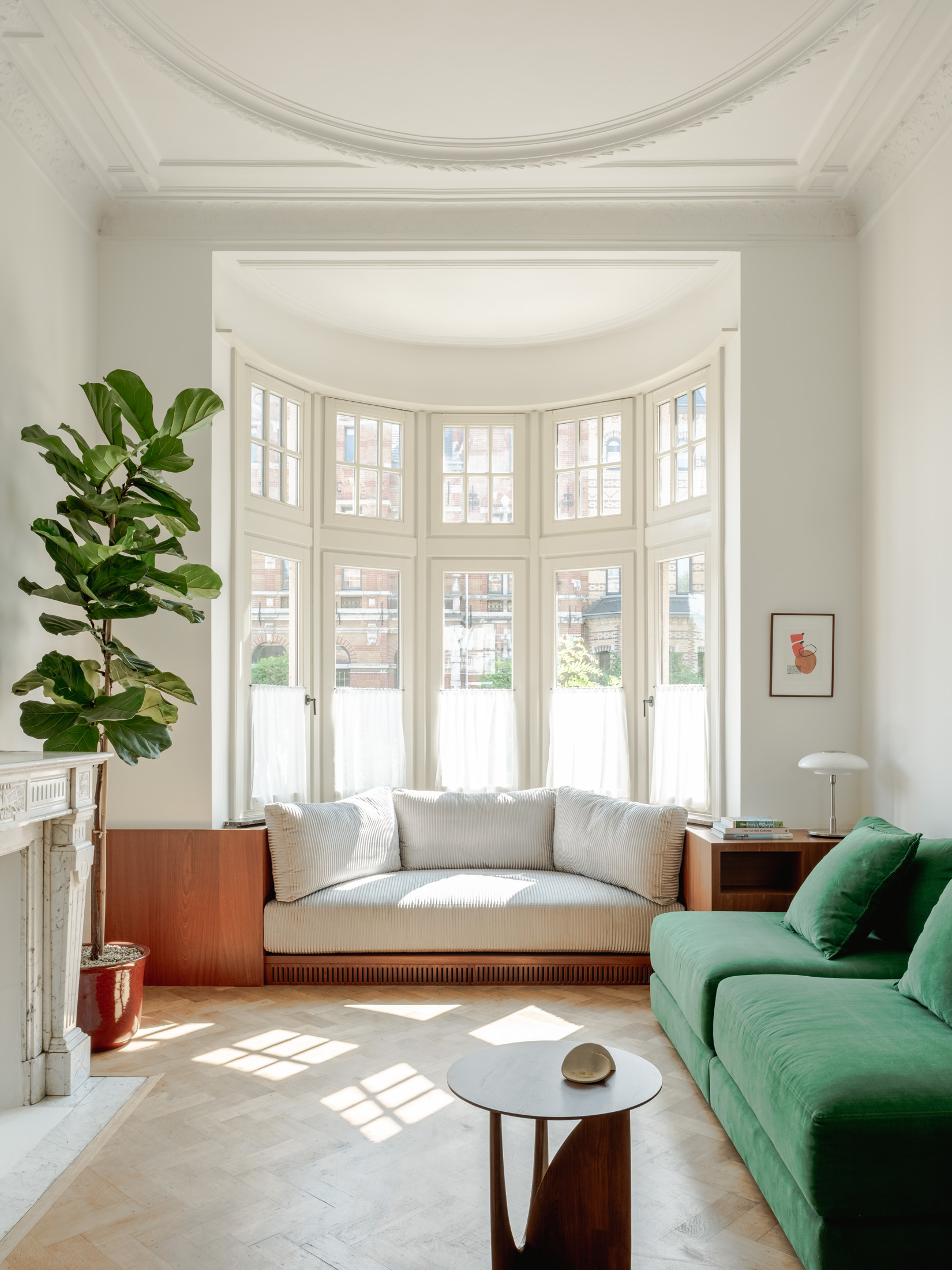





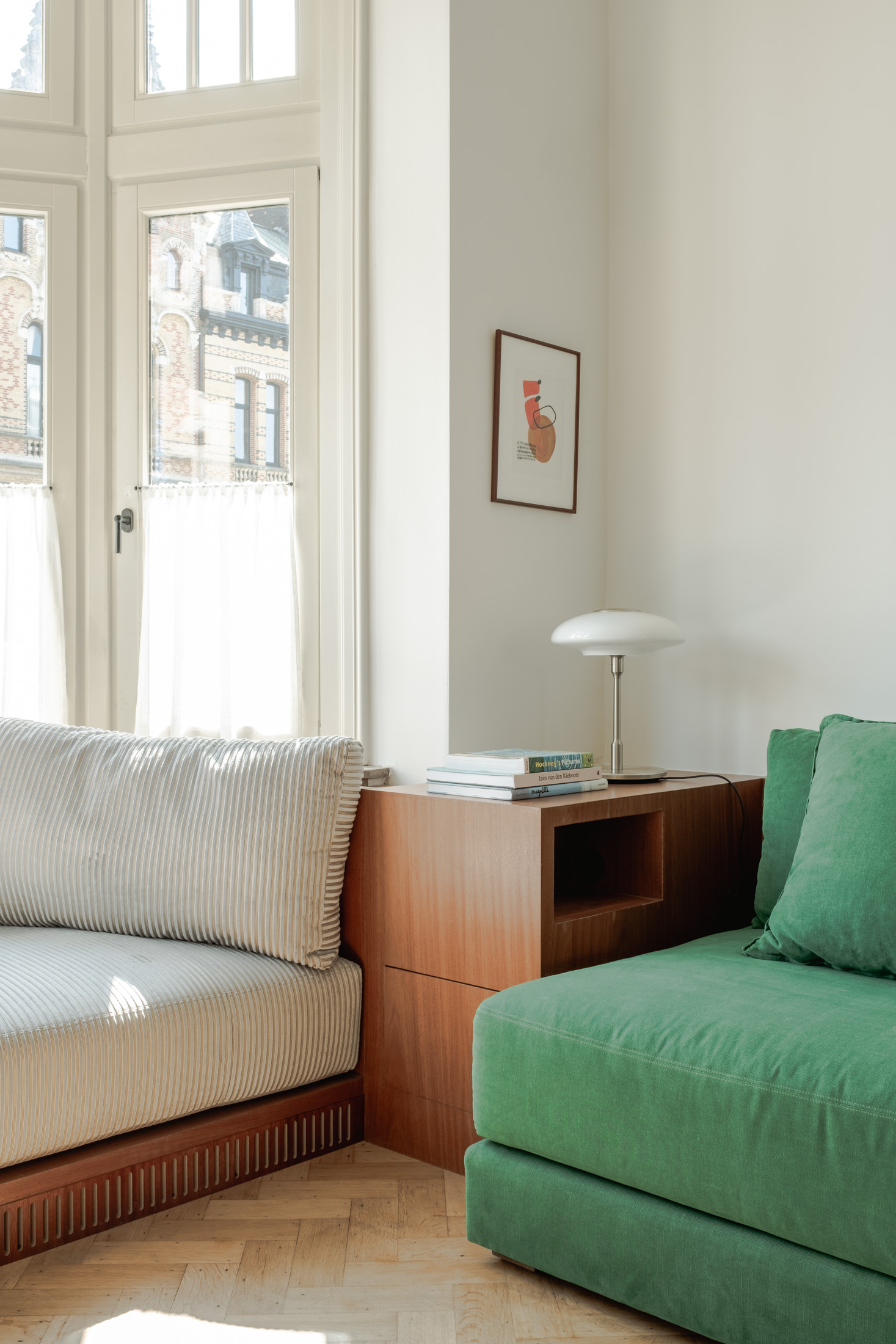

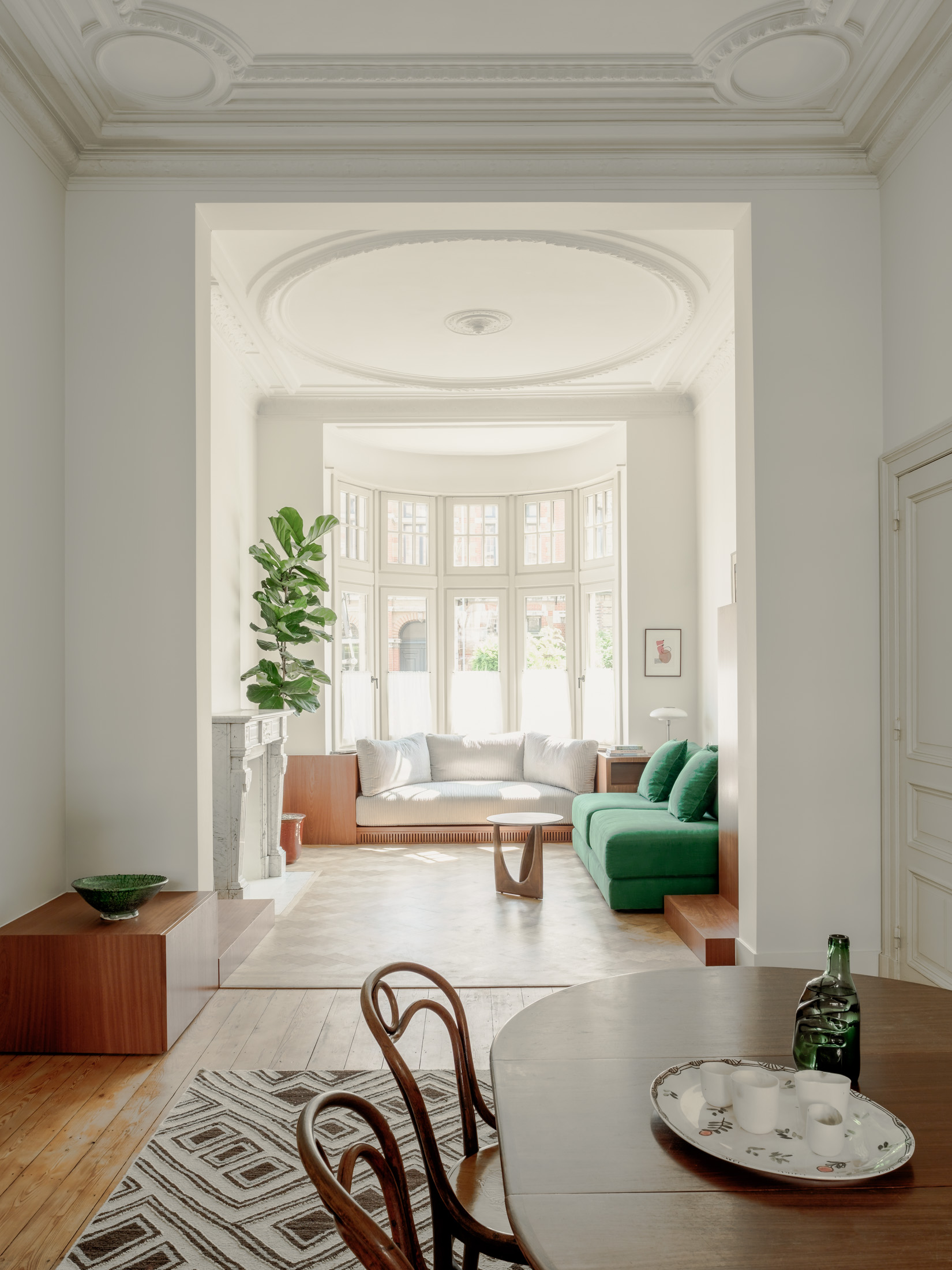






In an excisting bay window, we created custom built-in seating that flows into integrated shelving and storage. Executed in sapelli wood veneer, this rich material adds warmth and texture, while establishing a visual continuity that runs through the home. It reappears in the kitchen, where it is paired with an original terrazzo floor — a reminder of the building’s layered history. The kitchen itself unfolds in three parts: the central island, a built-in dining nook with a bespoke blue leather bench, and a functional wall with storage and sink. This layout supports both daily living and social cooking, emphasizing openness and ease of movement.
In an excisting bay window, we created custom built-in seating that flows into integrated shelving and storage. Executed in sapelli wood veneer, this rich material adds warmth and texture, while establishing a visual continuity that runs through the home. It reappears in the kitchen, where it is paired with an original terrazzo floor — a reminder of the building’s layered history. The kitchen itself unfolds in three parts: the central island, a built-in dining nook with a bespoke blue leather bench, and a functional wall with storage and sink. This layout supports both daily living and social cooking, emphasizing openness and ease of movement.

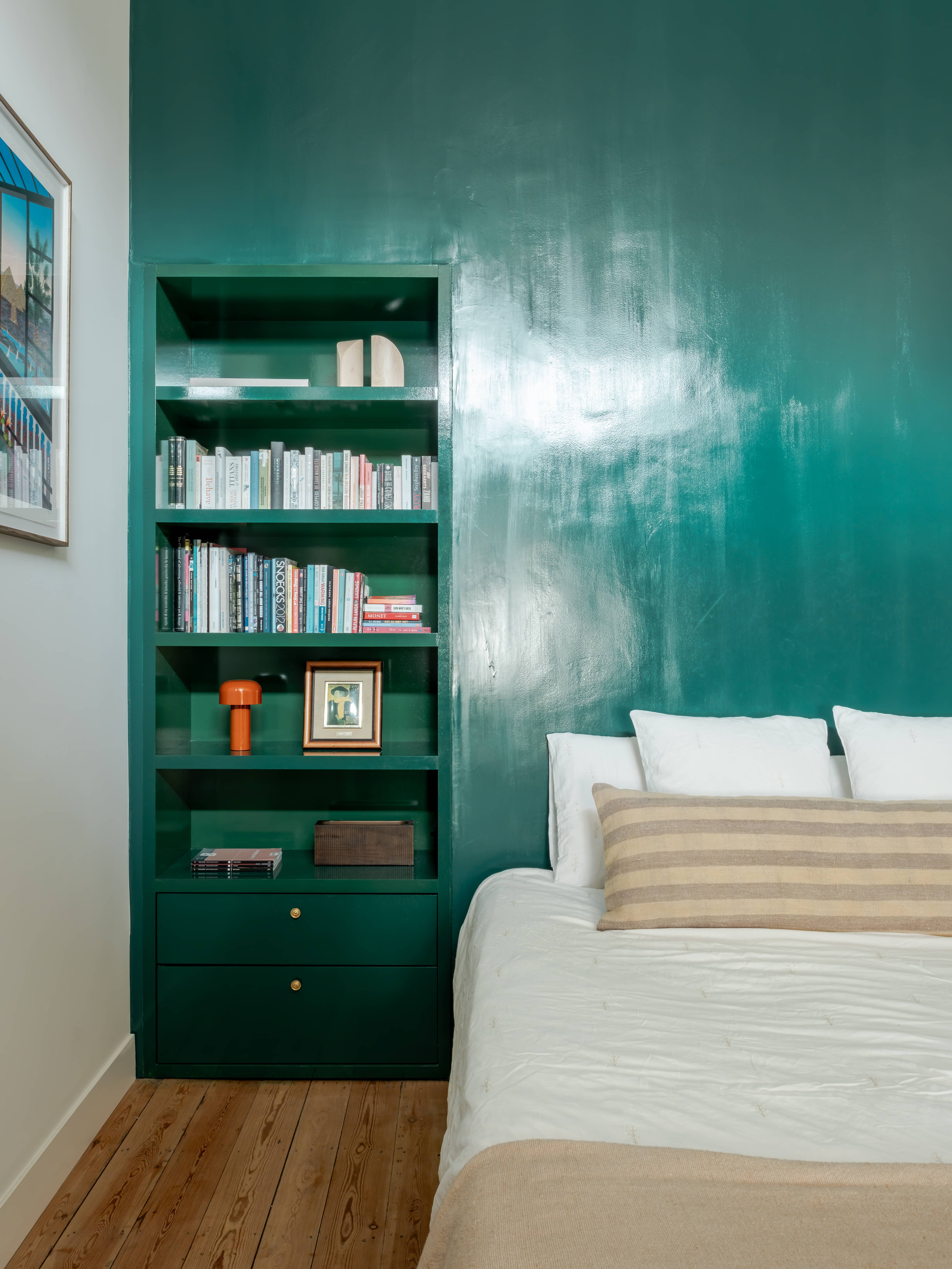
Beyond materiality, colour plays a conceptual role in the project. Each space introduces its own mood through unexpected but deliberate hues. In the master suite, a green lacquered wall and custom bookcase define the sleeping area, which connects via a sapelli-lined dressing to an en-suite bathroom. There, cream tiles wrap into a sunken shower, edged in high-gloss black that continues into shelving elements.
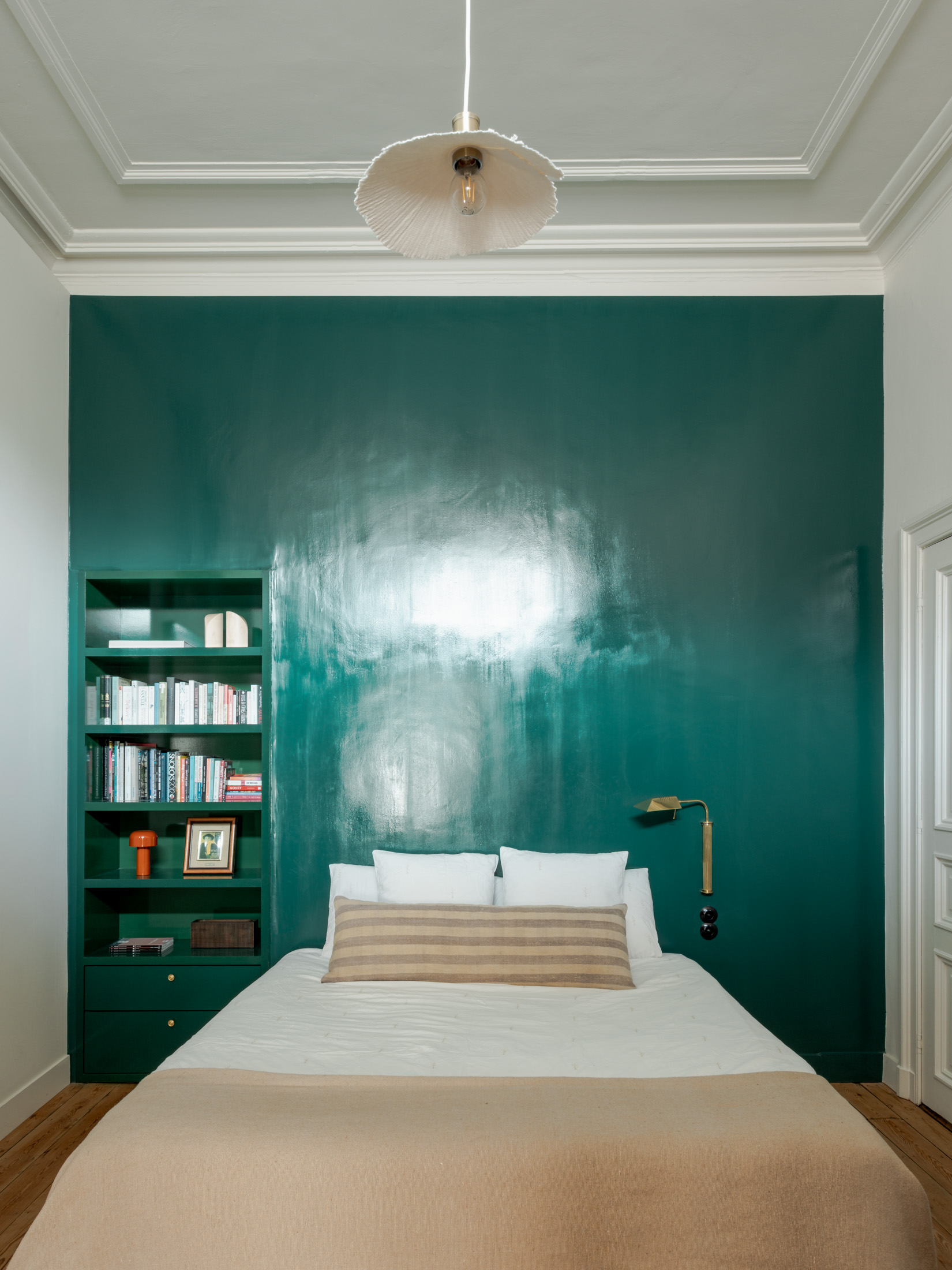

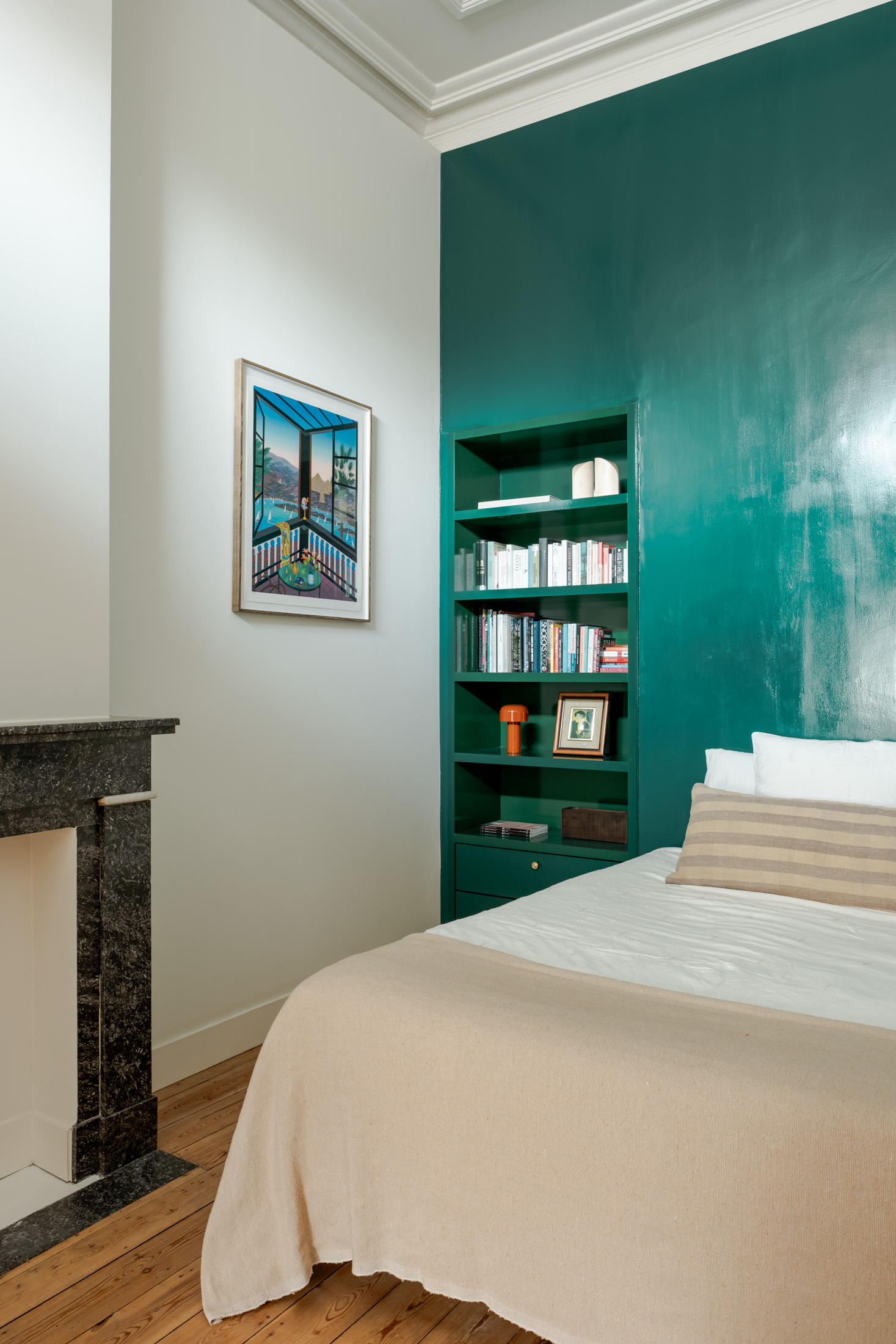






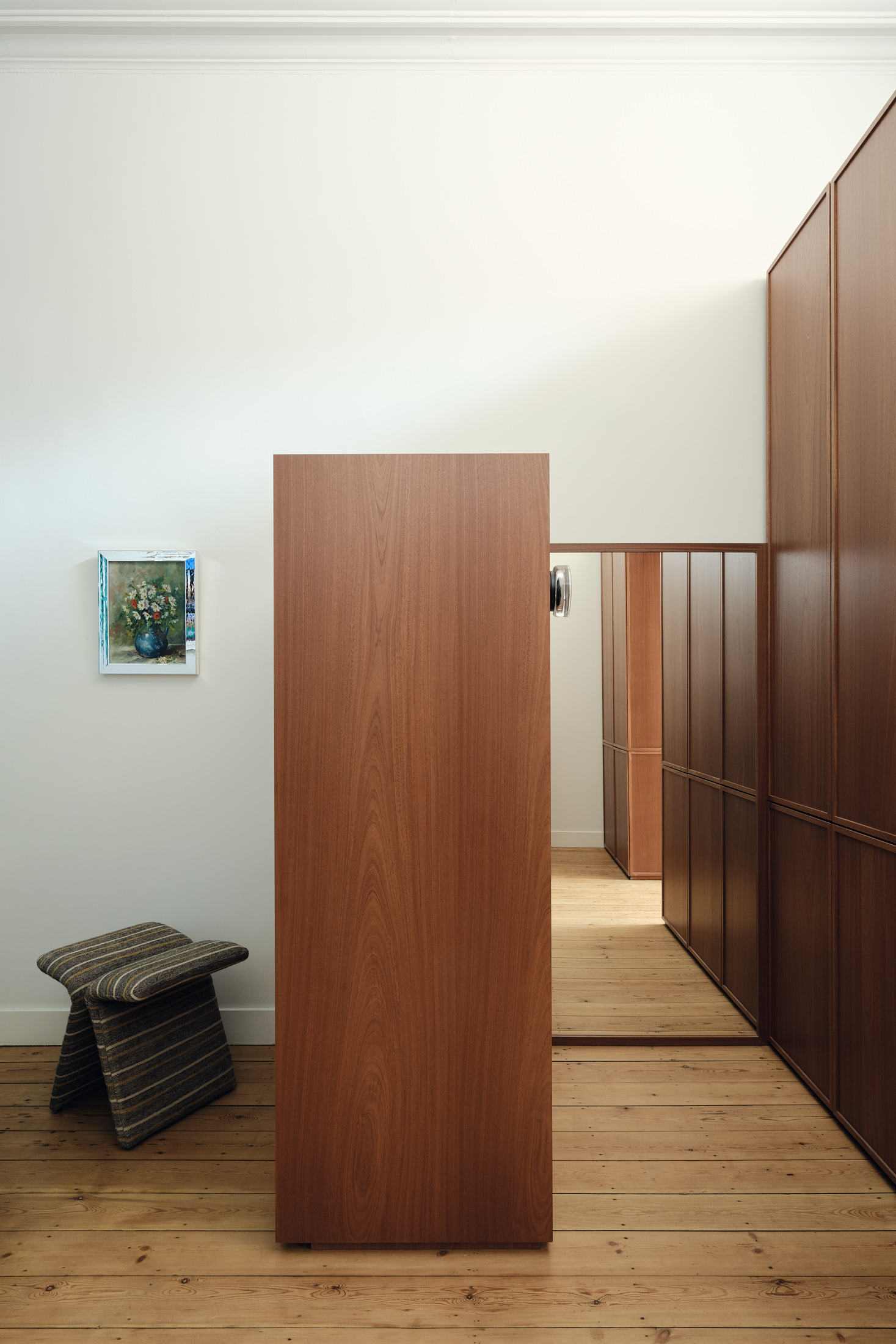





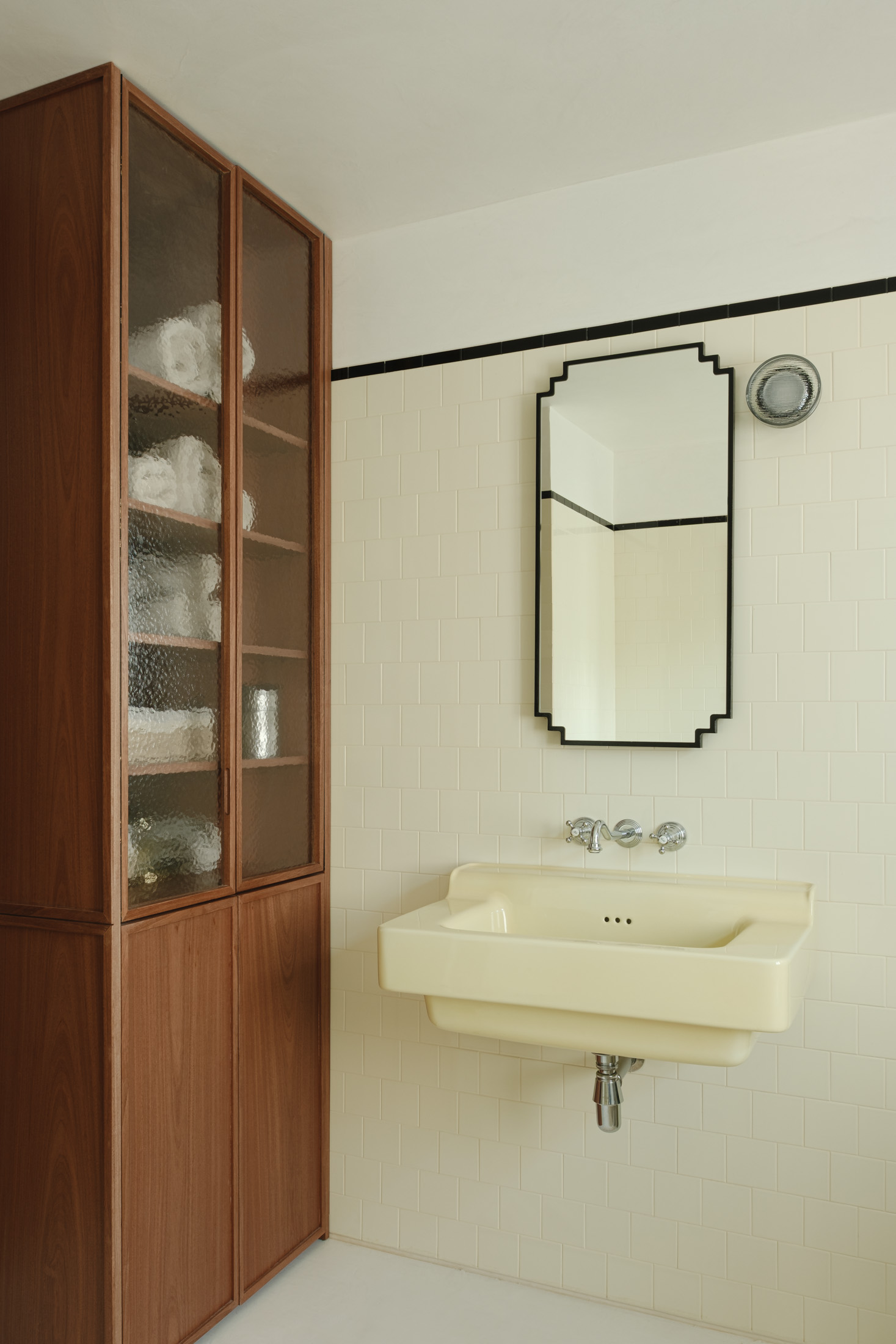

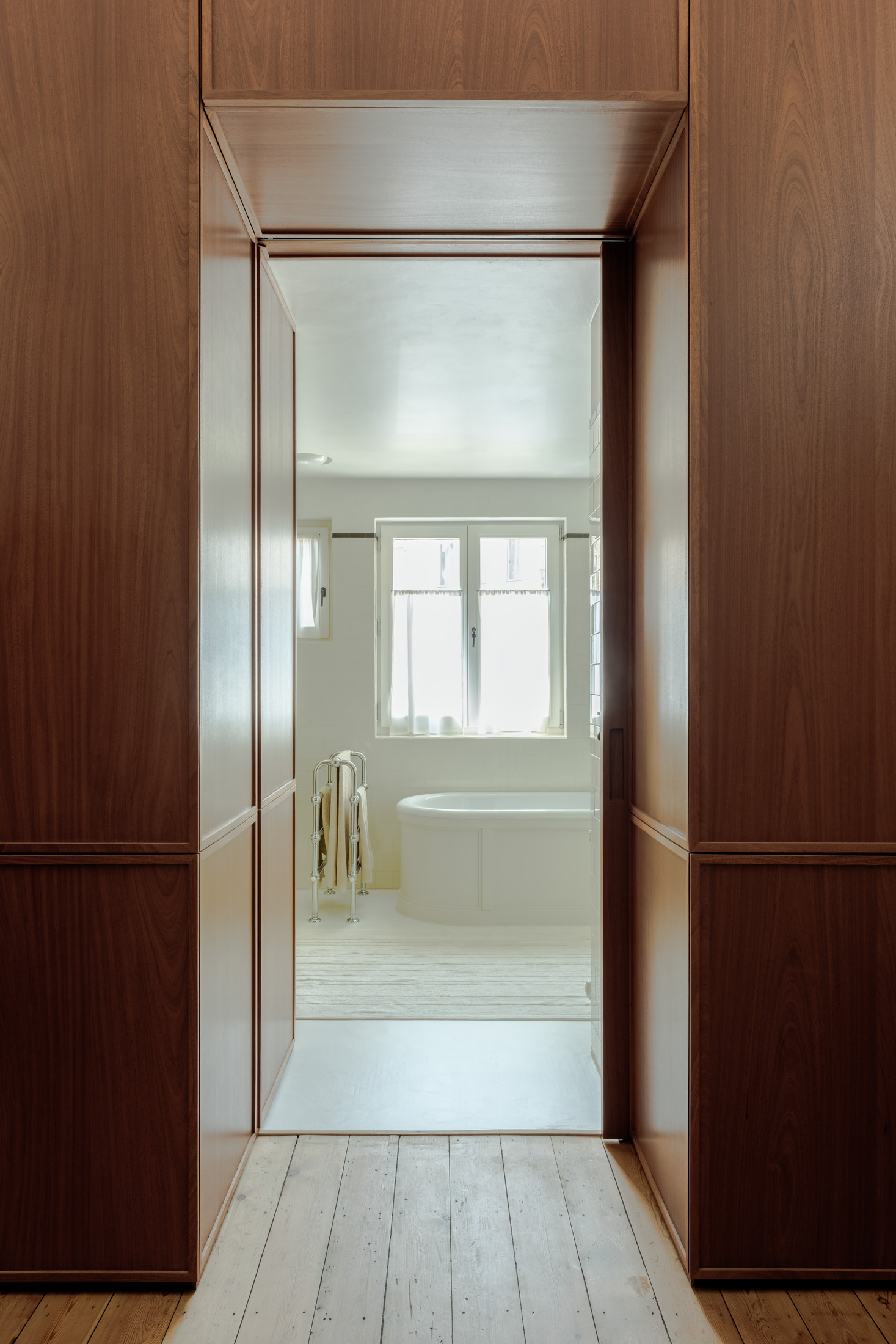






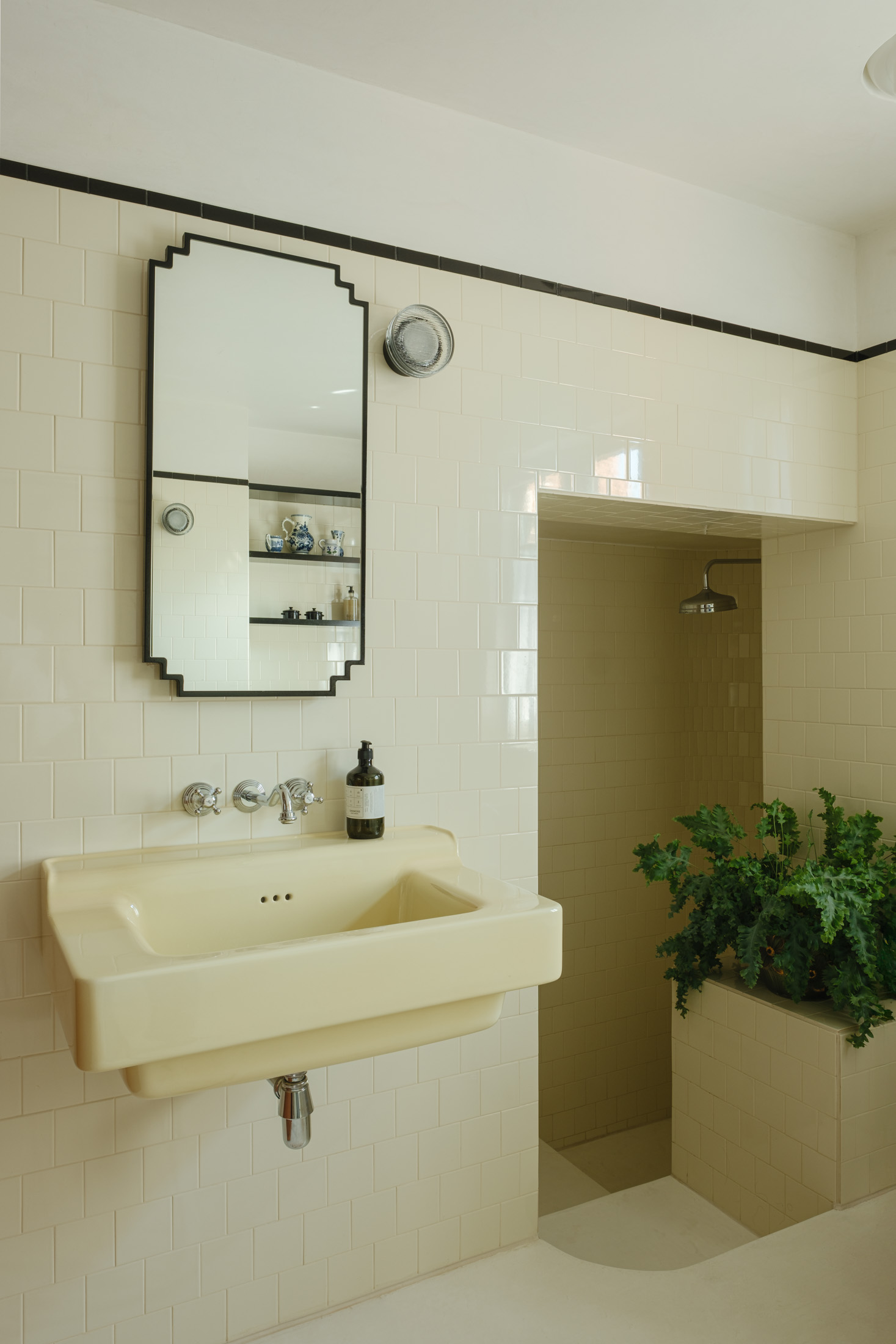





Beyond materiality, colour plays a conceptual role in the project. Each space introduces its own mood through unexpected but deliberate hues. In the master suite, a green lacquered wall and custom bookcase define the sleeping area, which connects via a sapelli-lined dressing to an en-suite bathroom. There, cream tiles wrap into a sunken shower, edged in high-gloss black that continues into shelving elements.
Beyond materiality, colour plays a conceptual role in the project. Each space introduces its own mood through unexpected but deliberate hues. In the master suite, a green lacquered wall and custom bookcase define the sleeping area, which connects via a sapelli-lined dressing to an en-suite bathroom. There, cream tiles wrap into a sunken shower, edged in high-gloss black that continues into shelving elements.

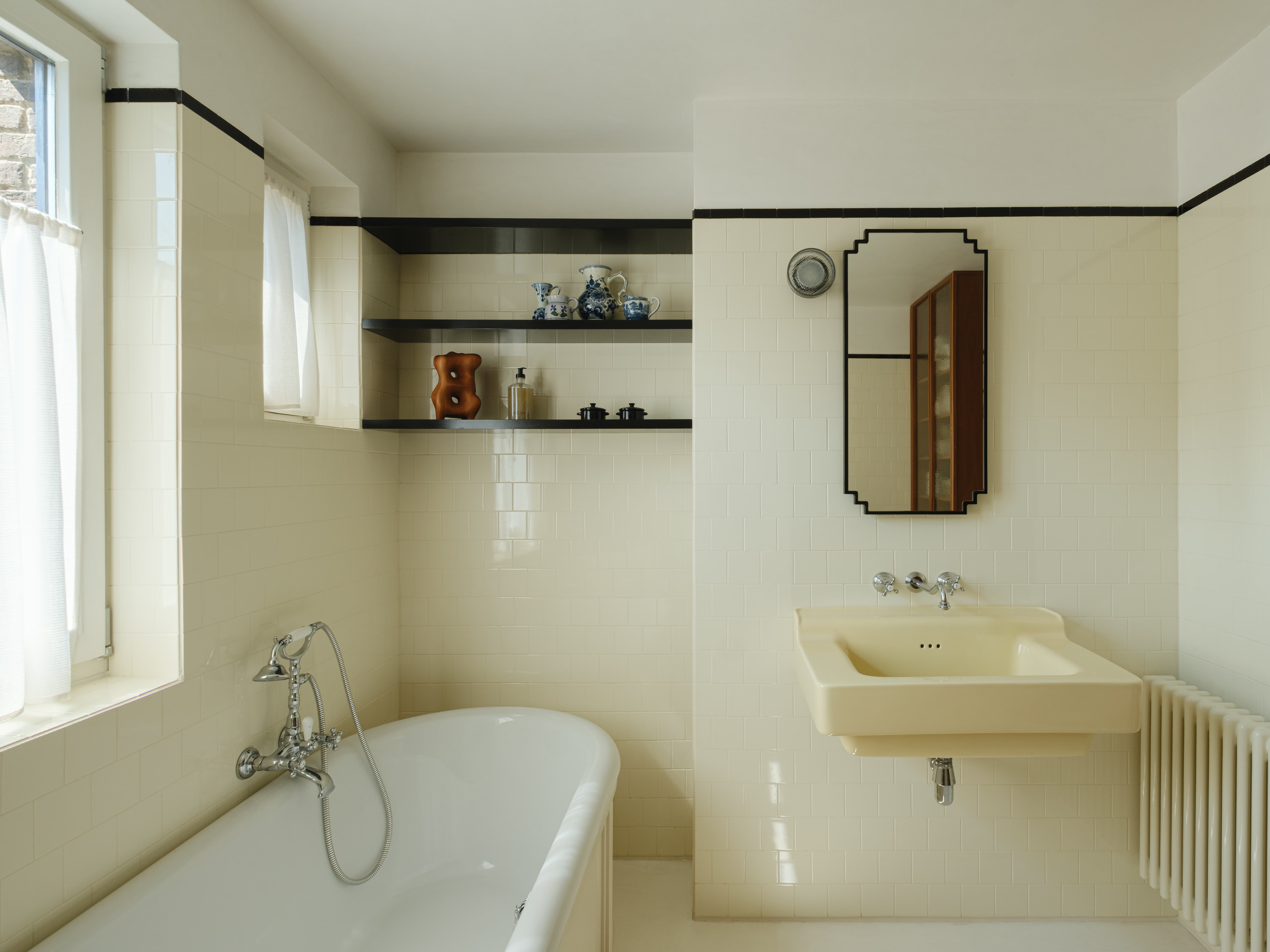
Elsewhere, colour becomes punctuation: a vibrant blue basin in the guest WC, red flooring in secondary bedrooms, a bright red vanity in the family bathroom. These moments of colour energize the overall palette and lend a sense of individuality to each space. Ultimately, this project is a case study in restraint and expression — a home reimagined not through contrast, but through considered continuity. By responding to the building’s spirit rather than rewriting it, we sought to restore a sense of belonging and quiet confidence to this period house.
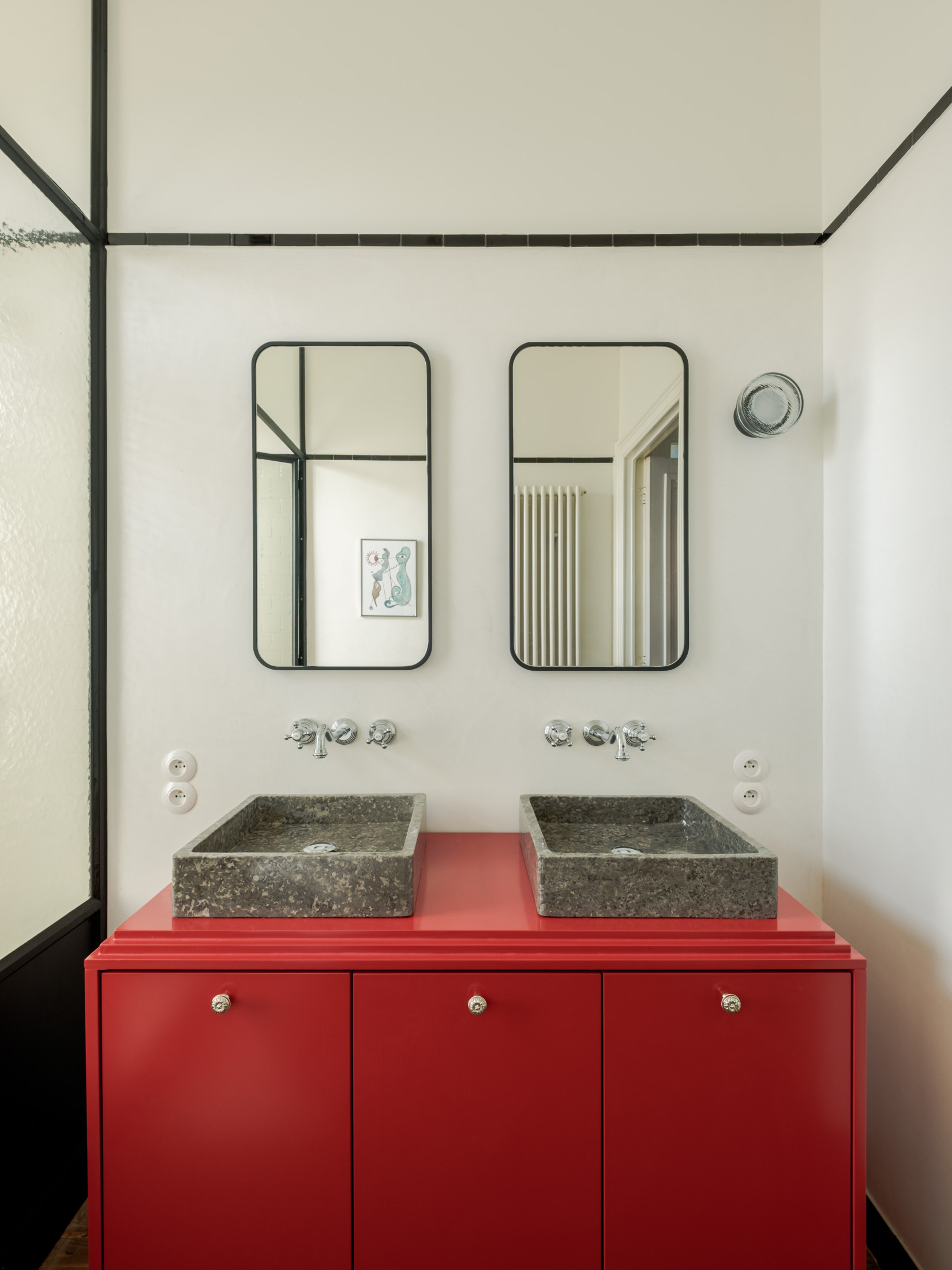
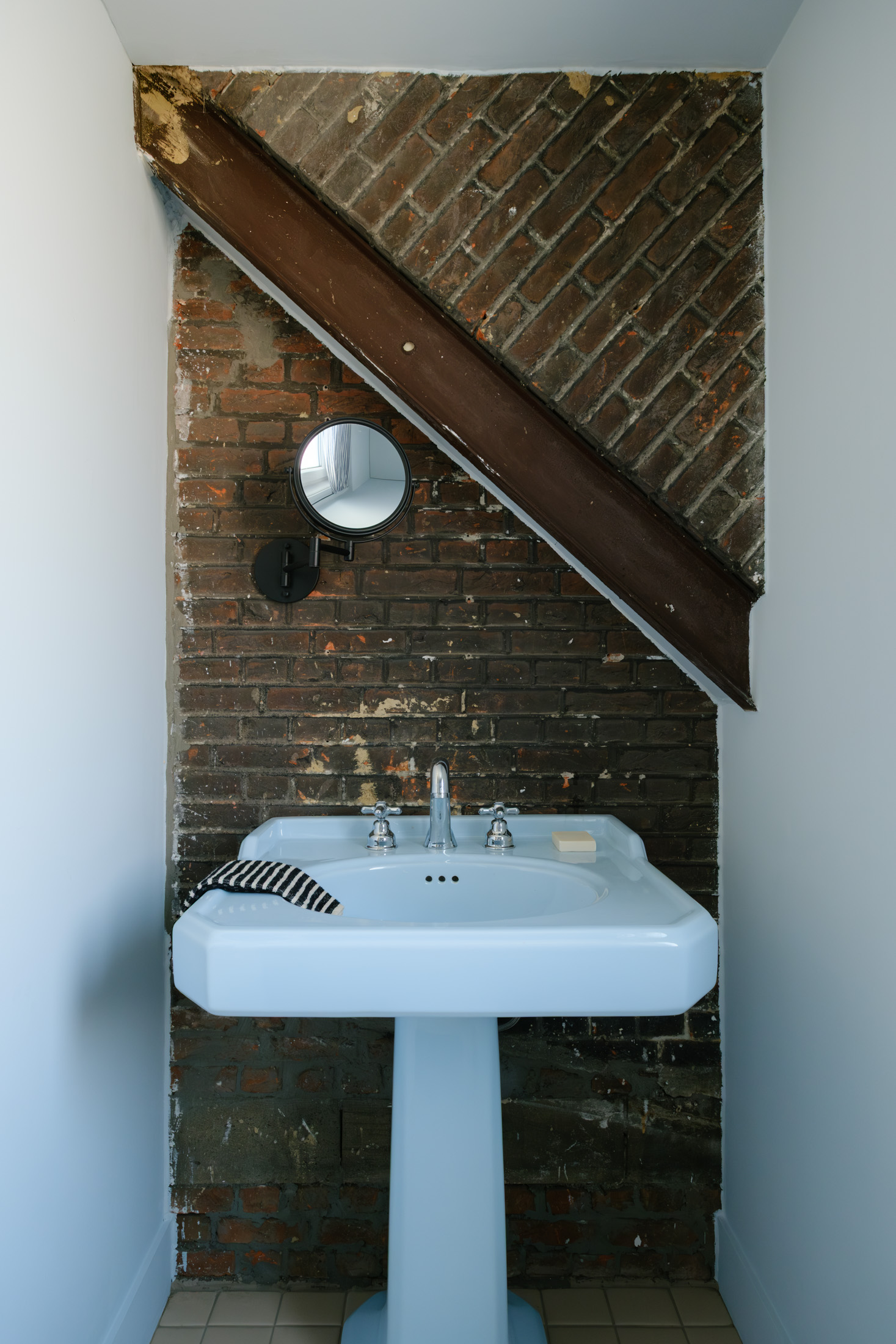
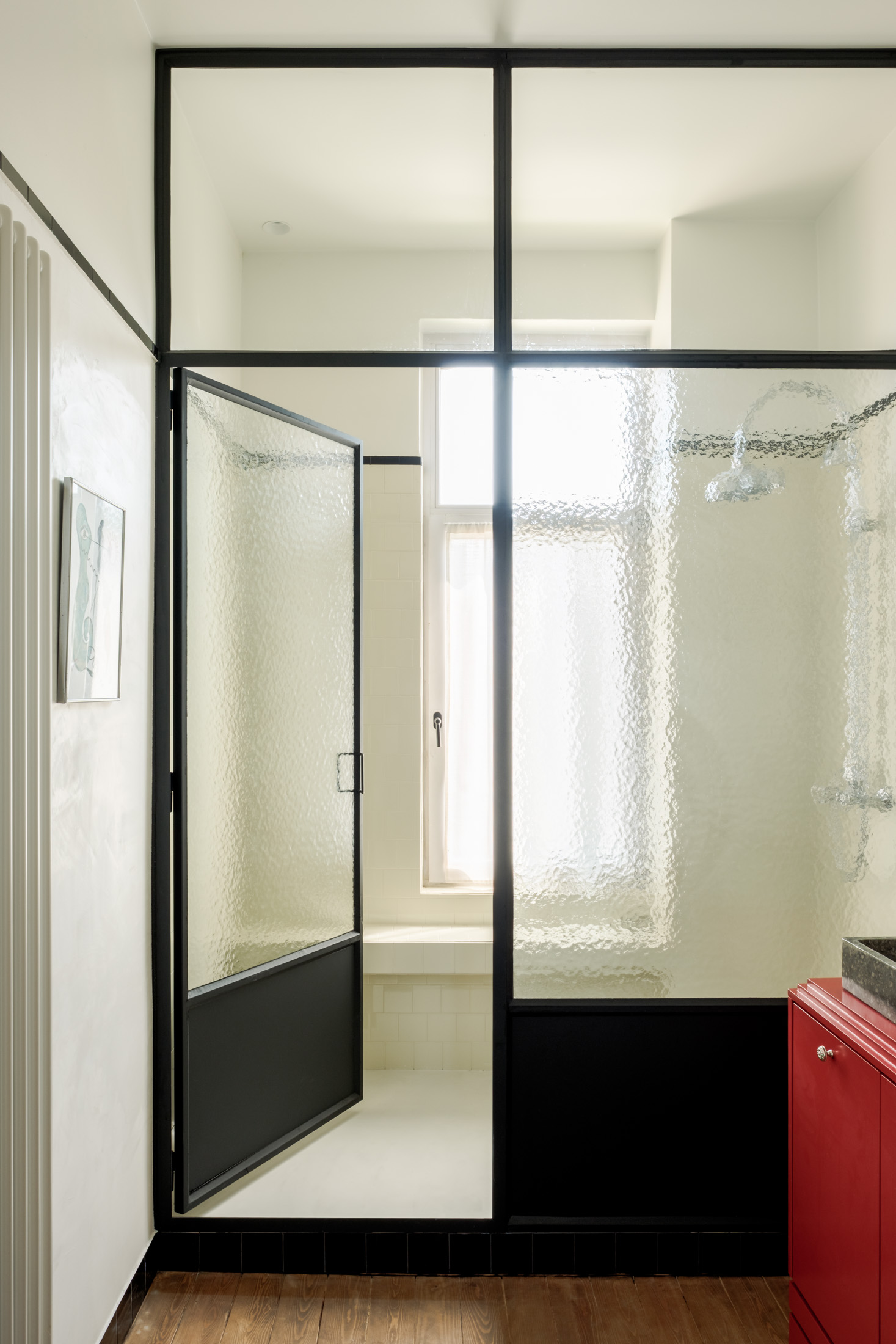
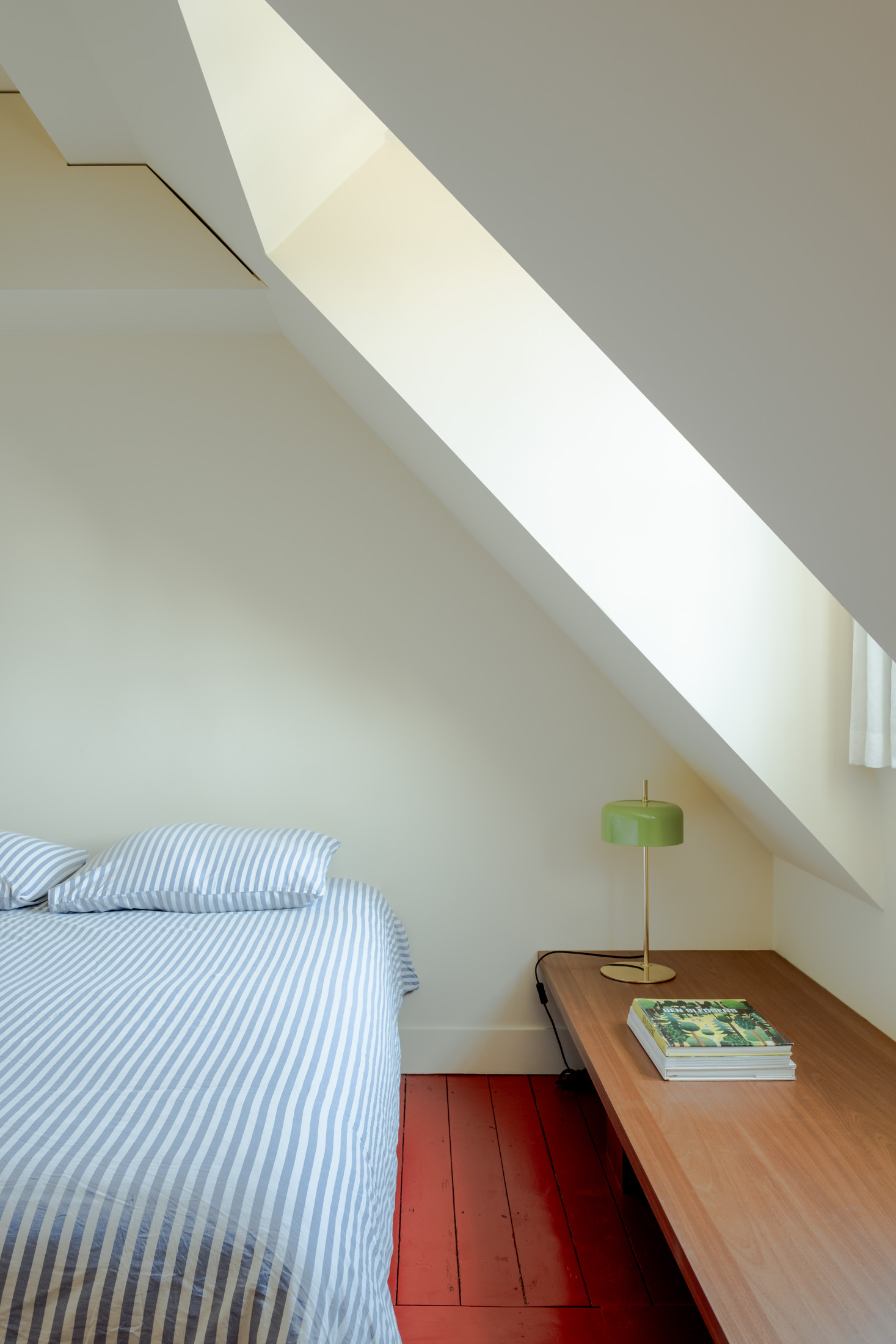
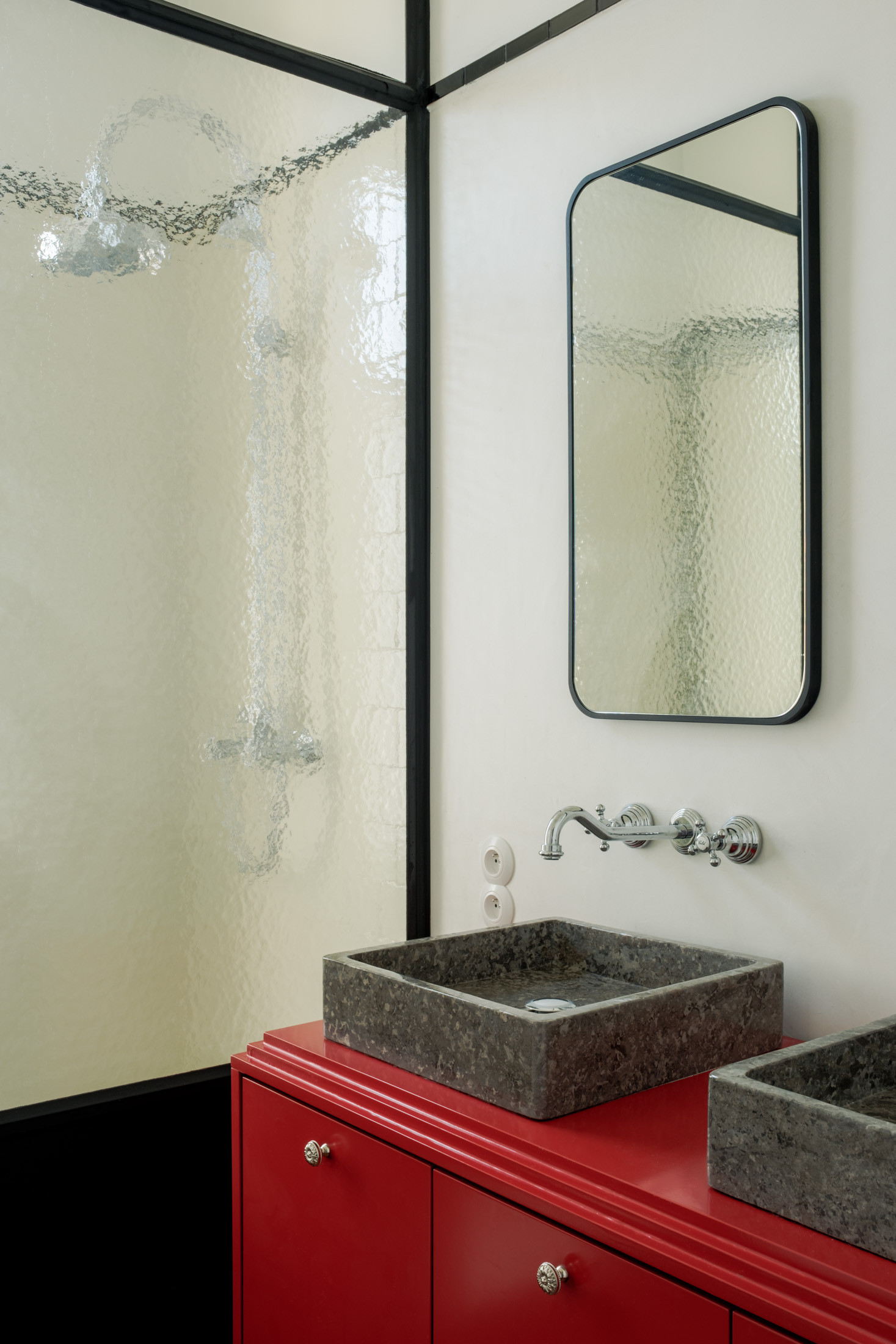
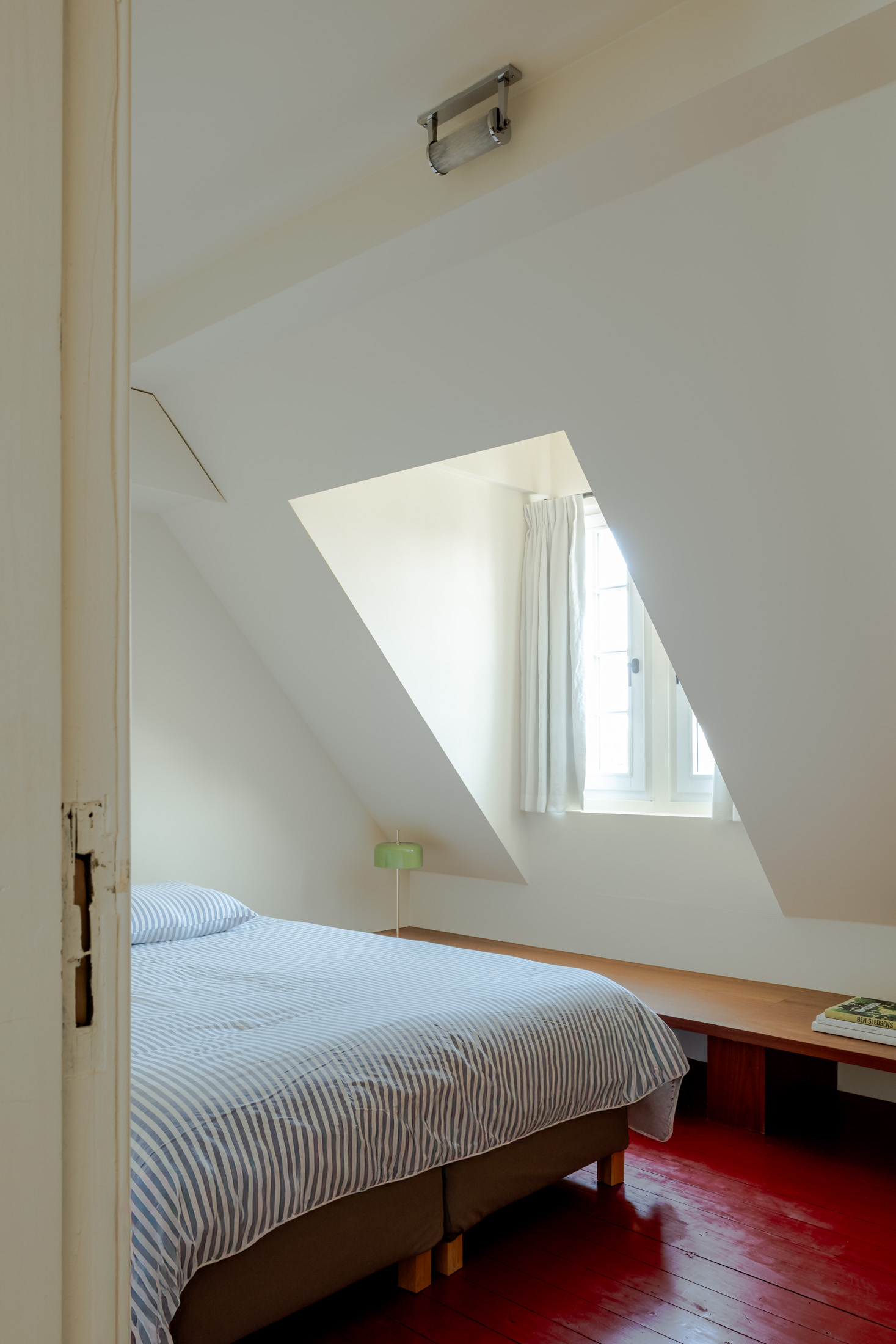
Elsewhere, colour becomes punctuation: a vibrant blue basin in the guest WC, red flooring in secondary bedrooms, a bright red vanity in the family bathroom. These moments of colour energize the overall palette and lend a sense of individuality to each space. Ultimately, this project is a case study in restraint and expression — a home reimagined not through contrast, but through considered continuity. By responding to the building’s spirit rather than rewriting it, we sought to restore a sense of belonging and quiet confidence to this period house.
Elsewhere, colour becomes punctuation: a vibrant blue basin in the guest WC, red flooring in secondary bedrooms, a bright red vanity in the family bathroom. These moments of colour energize the overall palette and lend a sense of individuality to each space. Ultimately, this project is a case study in restraint and expression — a home reimagined not through contrast, but through considered continuity. By responding to the building’s spirit rather than rewriting it, we sought to restore a sense of belonging and quiet confidence to this period house.


